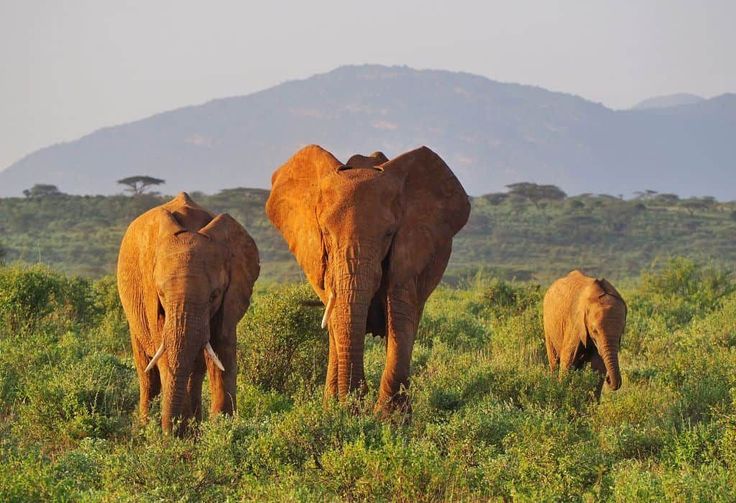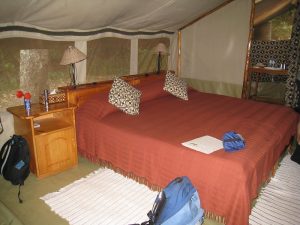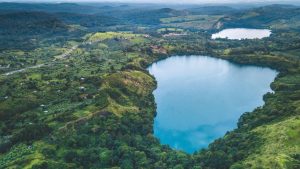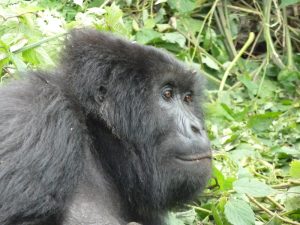Samburu National Reserve is one of Kenya’s most captivating safari destinations. Located in the northern region of the country, the reserve offers a unique wildlife experience that differs from the popular Masai Mara or Amboseli. With its arid landscapes, rare species, and cultural richness, Samburu provides travelers with a safari that combines adventure, exclusivity, and authenticity. This guide answers the most frequently asked questions about Samburu National Reserve and explains why it deserves a place on every safari itinerary. Guide to Samburu National Reserve
Where is Samburu National Reserve located?
Samburu National Reserve lies in northern Kenya, within Samburu County. The reserve sits on the banks of the Ewaso Ng’iro River, which provides a vital water source for both wildlife and the surrounding communities. It covers an area of about 165 square kilometers. Samburu lies approximately 350 kilometers north of Nairobi, making it accessible by both road and air. The landscape is characterized by semi-arid savannahs, rugged hills, and riverine forests, offering a striking contrast to the greener southern parks of Kenya.
What makes Samburu National Reserve unique compared to other Kenyan parks?
Samburu stands out due to its semi-arid climate and the presence of wildlife species not found in southern Kenya. The park is home to the famous Samburu Special Five, which include the reticulated giraffe, Grevy’s zebra, Somali ostrich, Beisa oryx, and gerenuk. This combination of rare animals attracts wildlife enthusiasts who want to see species beyond the “Big Five.” Furthermore, the cultural heritage of the Samburu people enriches the safari experience, offering visitors a glimpse into traditional pastoralist lifestyles. Guide to Samburu National Reserve
What wildlife can you see in Samburu National Reserve?
Samburu hosts a remarkable diversity of wildlife despite its relatively small size. In addition to the Samburu Special Five, visitors can spot elephants, lions, leopards, cheetahs, wild dogs, and hyenas. The Ewaso Ng’iro River attracts crocodiles and hippos, while predators gather along its banks to hunt. Elephants are particularly abundant in Samburu, and researchers have studied their behavior in the region for decades. The combination of common and rare species makes Samburu an excellent destination for game drives. Guide to Samburu National Reserve
What is the Samburu Special Five?
The Samburu Special Five refers to five unique animal species that are rarely seen outside northern Kenya. These include:
- Reticulated giraffe, distinguished by its net-like coat pattern.
- Grevy’s zebra, the largest zebra species, recognizable by its narrow stripes and large ears.
- Somali ostrich, larger than the common ostrich with distinctive blue-gray legs and neck.
- Beisa oryx, a desert antelope adapted to arid conditions.
- Gerenuk, also called the giraffe gazelle, known for its long neck and ability to stand on hind legs to browse shrubs.
Spotting these species adds value to any safari and makes Samburu distinct from other reserves.
When is the best time to visit Samburu National Reserve?
The best time to visit Samburu is during the dry seasons, from June to October and December to March. During these months, wildlife congregates around the Ewaso Ng’iro River, making sightings easier. The reserve experiences hotter temperatures than southern Kenya, so visitors should prepare for warm days and cooler nights. The wet season, from April to May and November, brings lush vegetation and fewer tourists but makes some roads challenging to navigate. Guide to Samburu National Reserve
How big is Samburu National Reserve?
Samburu National Reserve covers 165 square kilometers. Although smaller than many other Kenyan reserves, its compact size makes game drives rewarding because wildlife is easier to locate. The reserve’s boundaries are defined by the river and surrounding hills, ensuring that the ecosystem remains well-protected. Despite its size, the reserve supports an impressive range of species, making it an essential stop for travelers seeking a concentrated safari experience.
What bird species are found in Samburu National Reserve?
Samburu is a birdwatcher’s paradise with over 450 recorded bird species. Some of the most notable include the vulturine guineafowl, secretary bird, Somali bee-eater, tawny eagle, and pygmy falcon. The Ewaso Ng’iro River attracts water birds such as Egyptian geese, kingfishers, and herons. Migratory birds also pass through the reserve during certain times of the year, offering seasonal birdwatching opportunities.
How do you get to Samburu National Reserve from Nairobi?
Travelers can reach Samburu by road or air. By road, the journey from Nairobi to Samburu takes about six to seven hours, passing through Nanyuki and Isiolo. By air, domestic flights operate from Nairobi’s Wilson Airport to several airstrips within the reserve, including Buffalo Springs and Kalama. Flights take approximately one hour, making air travel the fastest option for visitors with limited time.
What safari activities can you do in Samburu National Reserve?
The main safari activity in Samburu is game driving, which offers opportunities to see both common wildlife and the Samburu Special Five. Other activities include:
- Birdwatching, with guided tours focused on rare species.
- Nature walks, conducted with experienced guides who explain plants, tracks, and smaller creatures.
- Cultural visits, where travelers learn about Samburu traditions, crafts, and dances.
- Photography safaris, designed to capture landscapes and wildlife in the best light.
These activities create a diverse safari experience that goes beyond typical game drives.
Are cultural experiences available with the Samburu people?
Yes, cultural experiences are a highlight of visiting Samburu. The Samburu people, closely related to the Maasai, live in traditional homesteads known as manyattas. Travelers can participate in guided cultural visits where they learn about pastoralist practices, traditional dances, beadwork, and the role of cattle in Samburu society. These cultural exchanges support local communities financially while promoting cultural preservation.
What types of accommodations are available in Samburu National Reserve?
Samburu offers a wide range of accommodation options, from budget-friendly campsites to luxury safari lodges. Visitors can choose:
- Luxury lodges with swimming pools, gourmet dining, and exclusive game drives.
- Tented camps, combining comfort with a close-to-nature experience.
- Public and private campsites, suitable for adventurous travelers.
Popular accommodations include Samburu Intrepids, Elephant Bedroom Camp, Larsens Camp, and Ashnil Samburu. Each option provides different levels of comfort but ensures proximity to wildlife.
Is Samburu National Reserve safe for tourists?
Samburu National Reserve is safe for tourists when visited with authorized guides and tour operators. The Kenya Wildlife Service and private conservancies maintain security within the reserve. Travelers should follow standard safari safety rules, such as staying inside vehicles during game drives and avoiding wandering at night without a guide. The political situation in Kenya is generally stable, but it is advisable to check travel advisories before planning a trip.
How many days do you need for a Samburu safari?
A typical Samburu safari lasts three to four days, which allows enough time for multiple game drives, cultural visits, and relaxation at lodges. Some travelers combine Samburu with other destinations, such as the Masai Mara, Amboseli, or Mount Kenya, extending the safari to one or two weeks. A minimum of two nights ensures travelers enjoy both morning and evening game drives.
Can you combine Samburu with other safari destinations in Kenya?
Yes, Samburu combines well with other Kenyan safari destinations. Many itineraries pair Samburu with the Masai Mara, Ol Pejeta Conservancy, or Aberdare National Park. Combining destinations allows travelers to see diverse ecosystems and wildlife, from the dry savannah of Samburu to the lush plains of the Mara. Domestic flights make these combinations convenient for travelers on tight schedules.
What conservation efforts exist in Samburu National Reserve?
Conservation organizations such as Save the Elephants and Ewaso Lions operate in Samburu, focusing on wildlife research and protection. These efforts have made Samburu a global hub for elephant research, with critical studies on migration and behavior conducted here. Community-based conservancies around the reserve also play a vital role in protecting wildlife corridors while supporting local livelihoods.
What is the climate and weather like in Samburu National Reserve?
Samburu experiences a semi-arid climate with hot daytime temperatures that can reach 30°C (86°F) and cooler nights. The region has two rainy seasons: the long rains in April and May, and the short rains in November. Rainfall is less intense compared to southern Kenya, making Samburu a reliable year-round safari destination. Travelers should pack light clothing for the day, warm layers for mornings and evenings, and sun protection.
What are the park fees for Samburu National Reserve?
The Kenya Wildlife Service sets park fees for Samburu. As of recent rates, international adult visitors pay around USD 70 per day, while children pay about USD 40 per day. Kenyan citizens and East African residents enjoy reduced fees. These fees contribute to wildlife protection, infrastructure maintenance, and community programs.
Which tour packages include Samburu National Reserve?
Many tour operators offer Samburu packages that include transport, accommodation, park fees, and guided game drives. Options range from short three-day safaris to longer multi-destination itineraries. Travelers can choose private safaris for exclusivity or group safaris for affordability. Popular packages combine Samburu with Ol Pejeta, Aberdares, and the Masai Mara.
Can families with children visit Samburu National Reserve?
Yes, Samburu is family-friendly, though parents should consider the hot climate and long game drives. Many lodges provide family tents, child-friendly meals, and educational programs about wildlife. Children enjoy spotting elephants, giraffes, and zebras, making Samburu a memorable safari for all ages. Some lodges also offer junior ranger activities to engage young travelers.
Why should Samburu National Reserve be part of your Kenya safari itinerary?
Samburu offers an authentic safari experience that combines rare wildlife, cultural encounters, and dramatic landscapes. Its smaller size makes wildlife viewing rewarding, while its cultural richness provides insights into the Samburu way of life. For travelers seeking a safari beyond the mainstream, Samburu delivers exclusivity and diversity, making it an essential addition to any Kenya safari itinerary.
Final Thoughts
Samburu National Reserve may not be as famous as the Masai Mara, but its unique wildlife, rich culture, and beautiful landscapes make it one of Kenya’s best safari destinations. Whether you are drawn by the Samburu Special Five, the abundance of elephants, or the vibrant traditions of the Samburu people, the reserve promises a safari filled with unforgettable moments. Guide to Samburu National Reserve




